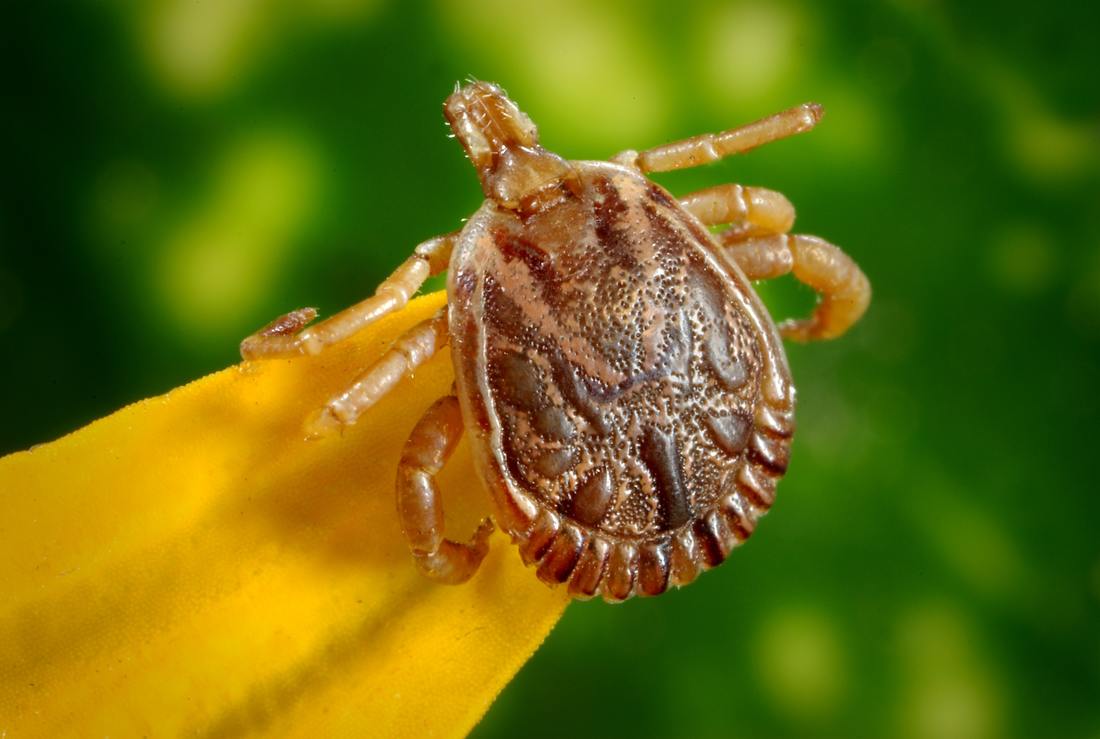|
I recently watched the Lyme Summit #3 produced by Dr. Jay Davidson and was so impressed with the amount of information and the diversity of speakers included in it that I had to share some of the knowledge nuggets that I learned. In the summit, Dr. Jay Davidson covers the latest testing and treatments on Lyme. If you suspect Lyme, are dealing with Lyme, or are not seeing resolution of your chronic symptoms, I encourage you to check out this summit as it is a great resource for information.
Interestingly, Lyme disease affects more people annually than breast cancer. Many people can live their lives suffering from Lyme disease and not even know that they have it since symptoms may be few and lack the obvious like joint pain that is commonly associated with the disease. It’s known as the “Great Imitator” because the symptoms can mimic almost any chronic condition causing the individual to be misdiagnosed. If you feel you’re not at risk for Lyme disease given your location, think again. Lyme disease is more prevalent in northeastern states, but cases of Lyme have been reported in all 50 states. Most people associate getting the bulls-eye rash with Lyme disease, but that does not commonly occur. Early symptoms can result in flu-like symptoms and fatigue within a week or two, and since most people forget about being bit by a tick by then, or don’t even think to associate their symptoms to the tick bite, correlation can be very hard to discern. It is also not uncommon for some people to not experience any symptoms until a strong emotional event or trauma occurs much later in life, which can trigger an immune response and causes the Lyme bacteria to become active. Symptoms vary across the board and many symptoms can often be mislabeled as another chronic disease or autoimmune diagnosis like Fibromyalgia, MS, Parkinson’s, ALS, and chronic fatigue syndrome. Here is a list of common symptoms to look out for. Common symptoms:
Lyme and Co-infections Lyme disease is caused by a type of bacterium referred to as a spirochete called Borrelia burgdorferi. Once a person is infected with this type of bacterium, the spiral-shaped spirochete can invade various parts of the body, including the brain. Co-infections are common with Lyme since the infected host can harbor other parasites, bacteria, fungi, and viruses along with it. A few of the co-infections associated with Lyme include the following:
Testing Testing for Lyme disease can be very complicated, expensive, and can often result in false negatives. If you suspect Lyme disease and have received a negative from a test, please don’t discount it. No Lyme test is 100% accurate. You may need to do a handful of other tests before a diagnosis of Lyme disease can be confirmed. Working with a Lyme literate medical doctor (LLMD) or another practitioner with experience in treating Lyme is highly recommended as it may involve a thorough history and exam before a definite diagnosis can be made. The standard two-step lab test recommended by the CDC is the most well- known test by physicians and is the most commonly used method of testing. It looks at antibodies the immune system produced after coming into contact with the Lyme bacteria. However, many people can have Lyme disease but not have antibodies that are being produced or picked up at the time of testing. This test may be covered by insurance and is more affordable than some of the advanced Lyme tests depending on your insurance, so it can be a good place to start. The following is by no means a comprehensive list of testing options for Lyme (as there are many), but rather some of the tests that the experts in the summit referenced: IGeneX- Uses advanced techniques for Lyme testing and offers a broad range of panels to choose from. It’s one of the most popular tests amongst healthcare practitioners that I have found as it has gained a great track record for accuracy. A physician order is required for this test. DNA Connexions- Uses advanced techniques for Lyme testing. One Lyme panel offered, which tests for 4 different genes that are the most common cause of Lyme disease along with 8 common Lyme disease co-infectors. You can test without a physician’s order. VCSTest- Visual contrast sensitivity test is a test created by Dr. Shoemaker which measures your ability to see details at low contrast levels. It is not used as diagnostic tool for a specific health condition, but a positive result could indicate exposure to mold or biotoxins like Lyme along with a number of other different conditions. It does not require a physician’s order and can be taken from your computer or mobile device. When I did a little research on the test, it looked like it would be a good test to re-take to monitor the progress of treatment after a diagnosis of Lyme was confirmed. ART- Autonomic response testing developed by Dr. Klinghardt is a form of biofeedback testing that uses kinesiology both with the diagnoses and treatment of Lyme disease. This specific form of testing can pick up on underlying issues that are commonly missed by conventional testing if carried out by a trained practitioner. Before testing Testing for Lyme disease is difficult because the Borrelia bacteria do not typically hang out in the blood. Because of this, provocation before blood or urine testing is recommended. Deep tissue massage or exercise were suggested that will help to provoke the Lyme bacterium from the tissues. One technique that Dr. Klinghardt has found to be very successful and one that he uses in clinic involve the use of ultrasound over areas where Lyme is suspected. The ultrasound will help to draw out the microbes within the tissues and bring them into circulation prior to collecting urine using a PCR test for Lyme. Another interesting technique noted was mentioned by Dr. Rudy Mueller. He uses glutathione as a binder to the mycotoxin, similar to using a chelating agent like DMSA for heavy metals, so that it can liberate it from the tissues and pull it into circulation. Genes Genetic analysis is becoming a popular trend for improving treatment in health. There are a handful of genetic variants that may impair critical functions in the body relating to detoxification and nutrition, so knowing what your genetic variants are or SNPs can help to better personalize treatment with Lyme disease. Some may feel that their genes determine their destiny, but this is far from the case! It is important to note that environment and circumstances trump genes, and genes can be turned on and off, which is known as epigenetics. Dr. Rob Miller is a genetics expert who uses genetic testing like 23 and me and ancestry.com to look at genetics for detox support. He started seeing a lot of Lyme patient’s and realized there were unique genetic components to all of them that were similar. He covered a myriad of information that would help to personalize treatment for a Lyme patient based on their genetic report. More information can be obtained from his site to learn more. He spoke quite a bit on the HFE 1 and the GAD genes. HFE 1 gene is involved with how we absorb iron. He noticed that this gene was much higher in those that could not beat Lyme disease no matter what they tried and those with this defect should be very careful with iron supplementation. The GAD gene takes glutamate and converts it to GABA. If a Lyme patient has too many GAD genes and they are given GABA for anxiety, they could potentially feel worse, so he suggested that it would be better to start on a low dose of glutamine instead and slowly increase the dose. Mold Mold exposure can be a trigger for Lyme and co-infections. It can also be the reason that you are not getting well if you have a chronic illness like Lyme disease. Insomnia, GI discomfort, irritability, nose bleeds, and headaches are just a few symptoms of mold. Someone can be exposed to mold and not have any issues, but it can eventually be set off with certain triggers like poor diet, emotional and physical stressors, and other environmental toxins. Mold can be hidden in areas such as bathrooms, HVAC systems, kitchens, carpeting, laundry rooms, and basements. Green Home Supply was a company recommended by Dr. Scott Richmond that can test your home for mold, and they also sell specialized enzymatic products for remediation. There are many labs that can determine exposure to mold, but the Great Plains Mycotox test is one in particular that Dr. Richmond mentioned. It screens for different mycotoxins using a sample of urine. Great Plains is a company I use for my clients, and they are definitely well known for advanced testing in chronic illness. If someone is sensitive to herbs and other treatments, he definitely considers mold to be an issue. When purchasing a new house, he suggested hiring a certified mold inspector to look at dust samples, air quality samples, environmental factors like radon, and signs of water damage, and be sure to ask the owners for disclosure. Dietary Approaches Building up the health of the gut is essential to ensure adequate recovery. Eliminating inflammatory foods, difficult to digest foods, and any known food allergens or sensitivities goes right along with this. A whole food, Paleo approach to diet can be very beneficial to supporting the immune system and to lowering inflammation. Most experts agree that eliminating inflammatory foods like grains and refined sugar can be very beneficial for boosting immunity. Sarah Ballantyne (a.k.a The Paleo Mom) reviewed a wealth of information on the Paleo diet pertaining specifically to gut health. A plant-based Ketogenic diet, which Dr. David Jockers did a very interesting segment on, has also shown to benefit those suffering from Lyme disease. However, a Ketogenic diet is not for everyone, and it should always be individualized as with any diet. Darren Schmidt talked about the importance of detoxing and addressing any mold issues before going into ketosis and how cycling in and out of ketosis is the ideal route to go. Address Lyme and Co-Infections Last If someone is dealing with Lyme disease, they are almost guaranteed to be dealing with other toxicities, viruses, infections, and pathogens. Healing the gut, adrenals, and supporting the organs of elimination should be addressed first. Drainage was a big topic covered, which includes supporting the liver, gallbladder, kidneys, colon, and lymphatics. Nick Ellenson discussed doing coffee enemas several times a week for liver/gallbladder and detox support. More information including the exact preparation and brands of coffee to use for the coffee enemas can be found here. Homeopathy, acupuncture, ionic foot baths, and castor oil packs were a few other drainage modalities mentioned. Removing parasites after addressing the gut and drainage also takes high priority as it can be extremely difficult to heal from Lyme with them present. Parasites can harbor Candida, heavy metals, and other infections, and they can also clog up the bile ducts, because of this, it’s crucial to get them out to begin to heal. After a parasite infection is removed, then one can begin to work on other areas like heavy metal toxicity, mold, and viruses if present, then begin moving towards tackling Lyme and other co-infections last. CBD Oil for Symptom Management Philip Blair discussed the use of CBD oil from hemp for rebalancing the endocannabinoid system and for the management of symptoms related to Lyme disease like pain, anxiety, and insomnia. He stated that people who took antibiotics for Lyme but still had symptoms are due to the cytokines caused by Lyme disease. CBD oil can help because research shows that it crosses the blood-brain barrier and calms inflammation in the brain. He recommended specifically the Elixinol brand and stated that it is best to take all forms under the tongue (gargled and swirled around in mouth) for maximum absorption and benefit. An initial dose of 15 mg 2 times a day was suggested, which can then be titrated up until results noted. He also mentioned that Omega-3s are an important component of healing the endocannabinoid system, so cod liver and fish oil, walnuts, flax seeds, and egg yolks are good sources to include in the diet. Emotional Healing When you’re dealing with any chronic illness, it’s important to address not only the physical side but also the emotional and spiritual side so that the body has a better chance of healing. Emotional traumas can often be the trigger for the disease, so it’s not just about genetics and lifestyle. Trina Hammock states that Lyme disease on the emotional level is set off by a separation conflict by your family or clan, and a great deal of healing can occur once this is resolved. Emotional trauma will show up in different parts of the brain, which Hammock states look like tree rings that you can see on a no-contrast CT. If you have similar patterns or conflicts resurfacing in your life, she states that your subconscious will bring them back up to get you to resolve them. Emotional work takes time, just like healing does, but once you move through it, you will feel more at peace with life and your gains in health will be noticed. Disclaimer: The information was taken as notes during the summit and is not intended to serve as medical advice. |
Hello!I'm Meagan Reynolds- a certified functional medicine practitioner and dietitian located in Nashville, TN. After overcoming my own health challenges with hypothyroidism, I was motivated to create my own practice where I help women reverse their thyroid, gut, and hormonal issues so they can reclaim their health. Archives
July 2023
Categories
All
|



 RSS Feed
RSS Feed